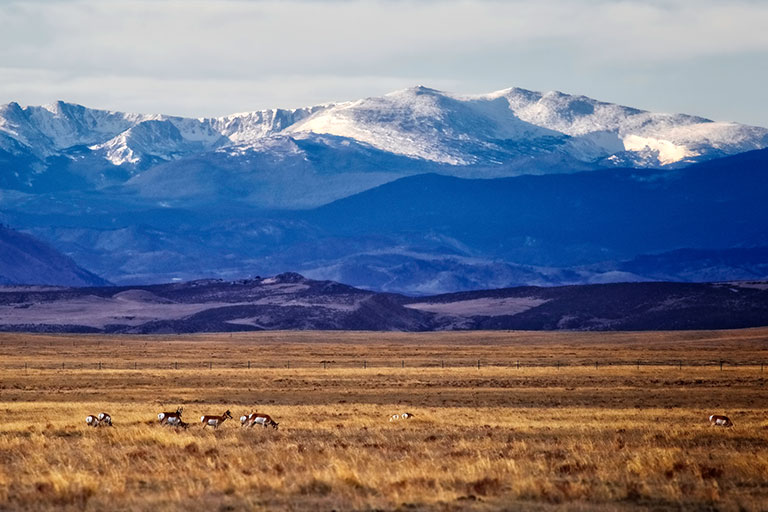By Dennis Smith
Big-game hunters have been intrigued by pronghorns for centuries, and I suspect some of that fascination has as much to do with where they live as it does with the animal itself. Unlike deer, elk or moose, pronghorns prefer the high plains and wide-open expanses of short-grass prairies to the timbered shelter of mountain forests or the dense understory of river bottoms. Occasionally you will find herds on sage flats that rub up against the foothills, but they will always be where they can see danger coming from a long way off.
While commonly called antelope and euphemistically referred to as “speed goats” by some, pronghorns are neither goat nor antelope. Oddly enough, they are more closely related to giraffes and okapis and quite unlike any other big game mammal here in the West, or in the world for that matter.
Hunting them on Colorado’s vast windswept grasslands is an infinitely different proposition from stalking elk or mule deer in the high country or whitetails in the bottomlands. Rather than burning shoe leather humping steep slopes with your bow or rifle and a heavy pack on your back, you will be most successful if you scout the flatlands from backcountry dirt roads in a vehicle armed with binoculars and spotting scopes. Once game is spotted — usually far off — you hide the truck in a dry creek or coulee and make a stalk on foot. It’s not difficult to see how this closely approximates the same technique used in hunting African plains game on the Serengeti: The professional hunter navigates across the African veldt in his trusty Land Rover until he or his scouts spot game, then they hustle off on foot to set up a shot for their client.
Not that we ever went to Africa, but this is exactly how the boys and I approach pronghorn hunting: safari style. Having secured the proper licenses and permission from property owners if necessary, we load the bed of our truck with a couple of coolers and a chop box. One cooler keeps drinks and sandwiches cold, another is kept iced but empty to hold pronghorn quarters should we be lucky enough to make a kill. The chop box holds miscellaneous dry foods, extra clothing and supplies. We keep binoculars, spotting scopes, topographic maps, property maps and handheld GPS devices in the cab.
Though we dearly love the meat and we do our level best to make a kill, the magic in pronghorn hunting for us lies in watching the sun come up over the prairie, where the view stretches for untold miles from one horizon to the other across low rolling hills of ochre-colored prairie grasses and cactus-studded ravines, and the sweetened scent of silver sage rides on the cool morning air. If we get to see a herd of pronghorns racing across the veldt, then our trip is a success.

